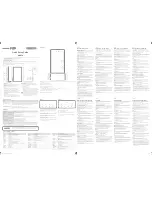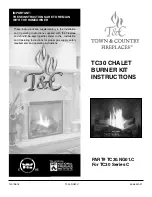
49585IN-15946 REV G
©2007 TOWING PRODUCTS, INC
2
6.
Insert the draw bar (C) into the hitch box and install pull pin (D) and spring clip (E). Draw bar may be used in either
the up or down position (see below).
NOTE:
Ball height should be greater
than coupler height by approximately 3/4 to 1” to compensate for vehicle
"squat”.
For vehicles with air springs, air shocks or an automatic leveling system, check vehicle owners manual. Unless
otherwise specified, level the trailer with the vehicle loaded as it will be when towing before setting ball height and
attaching trailer.
7.
Position the ballmount on the draw bar so that the ball will be approximately 3/4” higher than the coupler when in the
center of its tilt adjustment. Insert 3/4 X 4 1/2" bolt (F) through the lower hole in the ballmount and install 3/4”
lockwasher (G) and 3/4” nut (H). Rotate ballmount up to approximately the center of the tilt adjustment and install one
adjustment washer (J) on 3/4 x 5 1/2“ bolt (K) and insert bolt in upper slot in the ballmount.
Note:
The adjustment
washer hole is not on center and can be rotated 180
° for maximum head adjustment or half adjustment steps (see
below). Install the second adjustment washer (oriented the same as the first), lock washer, and nut on the other side.
Torque the 3/4 nuts (K) to 300 ft-lbs (If large enough torque wrench is not available, torque nuts to 150 ft-lbs, then turn
nuts an additional 1/4 turn - DO NOT lubricate the threads).
Adjustment washer hole oriented vehicle forward:
Adjustment washer hole oriented vehicle rearward:
Max head tilt rearward
Max head tilt forward
HIGHEST POSITION
LOWEST POSITION
Fig. 1























